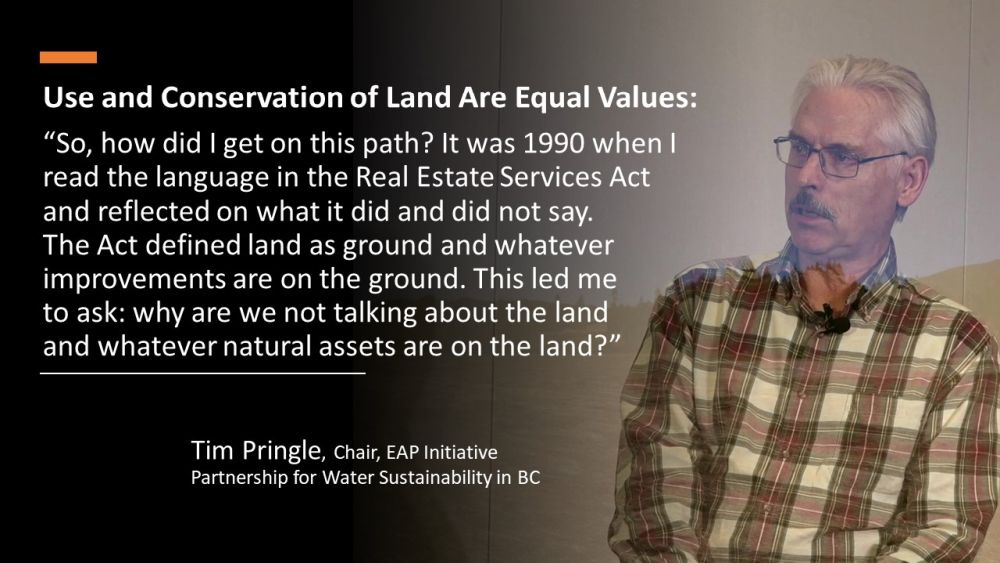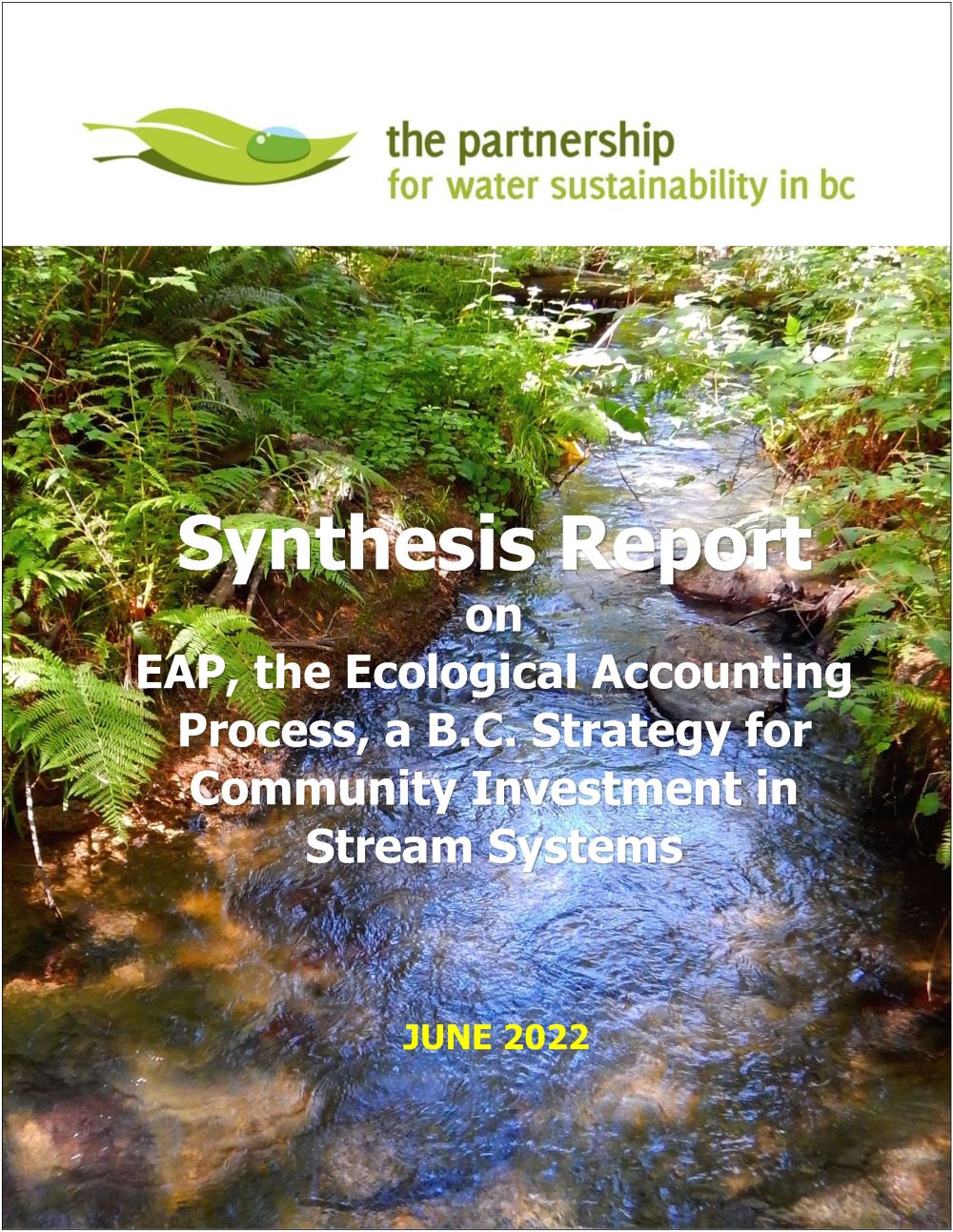FINANCIAL CASE FOR STREAMS: “EAP, the Ecological Accounting Process, is remarkable in its simplicity and is pragmatic. EAP starts with an understanding of the parcel because that is how communities regulate and plan land use. It is the parcel level where you get the information that you need to change practice to protect natural assets,” stated Tim Pringle, EAP Chair, at the time of release of Beyond the Guidebook 2022
Note to Reader:
In June 2022, the Partnership for Water Sustainability released the 4th in the Beyond the Guidebook Series. Titled Synthesis Report on the Ecological Accounting Process, a BC Strategy for Community Investment in Stream Systems, it showcases collaboration in action. EAP methodology and metrics allow local governments to make a convincing financial case for annual investment in stream systems to reduce the Riparian Deficit.

Vision for EAP, the Ecological Accounting Process, in ‘Beyond the Guidebook 2015’
In 2015, the BC Framework set a strategic direction for local government service delivery because it refocuses business processes on how physical and natural assets are used to deliver services, and support outcomes that reduce life-cycle costs and address risks.
Also in 2015, the Partnership for Water Sustainability released Beyond the Guidebook 2015. It supported the BC Framework by introducing the vision for an Ecological Accounting Process:
“The best blend of engineered assets (infrastructure) and natural assets (that provide ecological services) would support a robust long-term asset management plan and the required financial commitments.”

More Than Calculations
EAP is the convergence and synthesis of parallel journeys. Valuing use and conservation of land equally is the financial journey. Reconnecting hydrology and stream ecology by design is the applied science journey. The outcome would be restoration of urban stream integrity in settled areas.
“The vision for EAP set the challenge: develop a practical methodology, one that would be relevant to local government managers and the community, for determining the monetary value of drainage infrastructure and other services drawn (or adapted) to some degree from ecosystems,” recalls Tim Pringle, EAP Chair.
“Initially, we saw EAP as a tool – that is, the EA Protocol – that would help practitioners calculate the opportunity cost of balancing ecological services with drainage infrastructure.”
“However, the first demonstration applications revealed that the term EA Process more accurately describes the challenge of working with multiple intervenors to accurately describe the ecological services made possible by the hydrology. This comprehensive approach rarely takes place, but it is needed for strategic plans.”
To Learn More:
To read the complete Synthesis Report, download a copy of Ecological Accounting Process, A B.C. Strategy for Community Investment in Stream Systems (2022) .
The “story of EAP” is told in six parts. To download them individually, click on the links:
Financial Case for the Stream – Executive Summary
Part A – Synopsis for the Busy Reader
Part B – Story Behind the Story of Sustainable Drainage Service Delivery
Part C – Case Study Building Blocks Process
Part D – Hydrology is the Engine that Powers Ecological Services
Part E – A Stream is a Land Use

DOWNLOAD A COPY OF https://waterbucket.ca/gi/wp-content/uploads/sites/4/2022/06/EAP-Synthesis-Report-Beyond-the-Guidebook-2022_Jun-2022.pdf

